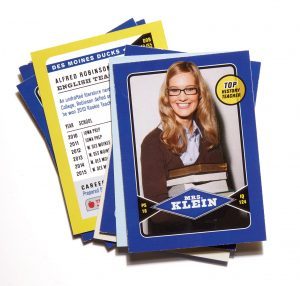SCIENCE FAIR IDEAS FROM SCIENCE BUDDIES 
For
your science fair project this year, think of something that you
really like to do.
Do you like sports and games?
There's a whole
world out there waiting for you to discover the science behind what
you love to do.
Understanding the science can help you to play a
better game.
Here is a list I took out of Science Buddies; these are
found under the Physical Science / Sports Science category.
Just looking through the topics will give you other ideas, too.
In
their website they're rated Beginner, Intermediate and Advanced; the
things you need to do the project are included.
Also -- Please see my blog entry on the Power of 10 words. These will direct you to some basic concepts in physics and geometry for motion, sound, and light. I think it's a good starting point. You may find you know more about physics and geometry than you think you do.
MORE
TOPICS UNDER PHYSICAL SCIENCE IN www.sciencebuddies.org:
Aerodynamics
and Hydrodynamics Physics
Music
–
Since I began this over ten years ago, I've become interested in
the physics of music and the arts, too. (And science in stories!)
Invitation: For
any kids who are close enough to Quincy, Mass. / South Shore area, we would
be interested in considering your project to be one of the exhibits
at the 4th South Shore Science Festival. (www.southshorescience.org) We're looking
for exhibits that are interactive, that is, the people who come to
your table will be able to participate in some way. We can help you
with that.
And for kids who live anywhere and everywhere: Help me spread the word that this is such a great way to get a start in understanding physics -- and geometry. Thank you!
Look
forward to hearing from you!
Kathy
Skipping
Science: An experiment in jump rope lengths
Jumping
Distance
The
Brain-Body Connection: Can exercise really make our brains work
better?
Think
Fast! (reaction time)
Bouncing
Basketballs: How much energy does dribbling take?
Drag
Racing in the Water
Field
Goal! The science behind a perfect football kick
How
Quickly Does a Tennis Ball Lose Its Bounce?
Popping
an Ollie: How skateboarders + physics = A really cool trick
Speed
Quest
The
Biomechanics of Pitching
Under
Pressure: Ball bouncing dynamics
Aerodynamics
of a Football
Basketball
Physics: Where does a bouncing ball's energy go?
Basketball:
Will you bank the shot?
Football
Field Goals: Going the distance
Heart
Health: How does heart rate change with exercise?
How
Do Under-Inflated Tires Affect the Difficulty of Riding a Bike?
How
Far Can You Throw (or Kick) a Ball?
How
Fast Can You Shoot a Hockey Puck?
How
High Can You Throw a Baseball? A Tennis Ball? A Football? A Golf
Ball?
Measuring
Concussion Risk in Football and Other Contact Sports
Nothing
But Net: The science of shooting hoops
Physics
of Vibrations
Racing
to Win That Checkered Flag: How do gases help?
She
Shoots, She Scores! How does hockey stick flex affect accuracy?
Soccer:
Geometry of goal scoring
The
Physics of Cheating in Baseball
The
Physics of Follow-Through
Back
and Forth to Go Forward: A snake on wheels?
Balancing
Act: Finding your center of gravity
Baseball
Bat Debate: What's better, wood or aluminum?
Cold
Pack Chemistry: Where does the heat go?
Golf
Clubs, Loft Angle, and Distance: The science of hitting
Power
Kicks: The physics of martial arts
Skateboard
Extremes: Which wheels are best for speed and turns?
Skiing and Friction: How does ski wax affect the sliding friction of skis?
Tee Time: How does tee height affect driving distance?
Tee
Time: How fast is your golf swing?
The
Physics of Baseball and Hit Charts
Tightening the Turns in Speed Skating: Lessons in Centripetal Force & Balance
A Cure for Hooks and Slides? Asymmetric dimple patterns and Golf Ball Flight
Aerodynamics
and Hockey: Does the force of drag have an effect on the distance
the puck will travel?
Are
more expensive golf balls worth it?
Basketball:
The geometry of banking a basketball
Crossed Up: Does crossed hand/eye dominance affect basketball shooting percentage?
Electrolyte
Challenge: Orange juice vs sports drink
Football:
Punting
Paintball
Ballistics
Playing
the Angles: The physics of balls bouncing off of surfaces
The
Science of Spin: How does spin affect the trajectory of a kicked
soccer ball?
Skating
and Angular Momentum
The
Science of Spin: A baseball pendulum
Which
Team Batting Statistic Predicts Run Production Best?
Golf
Clubs, Loft Angle and Distance


